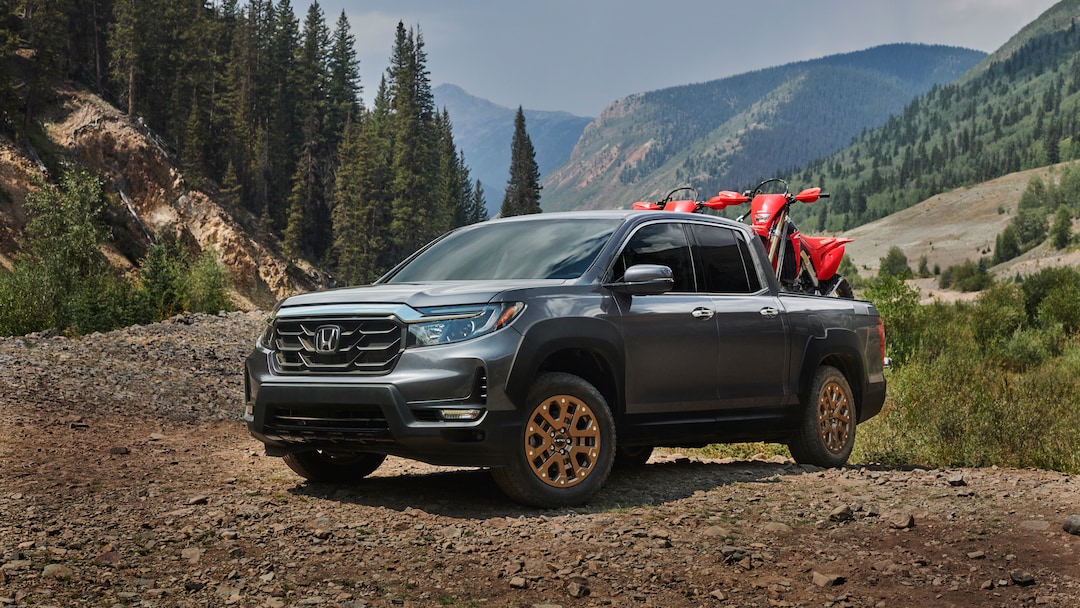2021 Honda Ridgeline Review – A Bold New Look
Honda knows it has a good thing going with its versatile, comfortable, practical midsize Ridgeline truck. However, unlike its competitors, the Ridgeline has traditionally looked somewhat like a minivan with a pickup bed. Thankfully, the revised-for-2021 Honda Ridgeline enhances its proven formula by maintaining its segment-exclusive unibody construction and fully independent suspension, providing a car-like ride and thoughtful interior layout while adopting bolder styling that aligns better with its capabilities. Consequently, the Ridgeline now looks more truck-like, which is a positive development.
Putting on a Braver Face
As a result of a more extensive redesign than the standard mid-cycle refresh, the Ridgeline showcases all-new sheet metal forward of the windshield. This includes a more prominent grille that grants the Ridgeline a bolder appearance and a more upright front end. When comparing the 2020 model side-by-side with the 2021 model, the effect is dramatic.
Both vehicles undoubtedly represent the Ridgeline, but to the discerning eye, the 2021 model exudes greater presence without resorting to cliché design elements or oversized “trucky” features; the old model bore similarities to Honda’s Pilot three-row crossover as much as to its Odyssey minivan.
The grille trim on the RTL and RTL-E trims is chrome, while the entry-level Sport trims and the slick Black Edition models feature a more understated gloss black finish. Notably, the lower front fascia has also been remodeled, incorporating large side vents that serve both aerodynamic purposes and evoke a sporty feel, akin to the controversial 2019 Silverado’s styling cues. Out back, a revised bumper is complemented by aggressive new twin exhaust tips, reminiscent of the sporty bumper designs found on some Ram 1500 models.
Finally, a Volume Knob!
Changes to the interior of the Ridgeline are minor yet welcome. An updated infotainment system now includes a real, physical volume knob—an appreciated improvement. Additionally, new materials and accents enrich the interior. All of Ridgeline’s convenient storage compartments remain, and Honda’s low-profile push-button shifter has freed up console space. This arrangement was introduced across all trims last year, replacing the traditional physical lever.
There are no significant changes to the powertrain or running gear, aside from the noteworthy addition of Honda’s torque-vectoring i-VTM4 all-wheel drive system as standard across all Ridgline trims. Previously, this system was available only on the upper RTL-E and Black Edition models. While this change increases the entry-level Ridgeline Sport’s price, when compared to last year’s model equipped with then-optional all-wheel drive, the increase is a modest $350.
All Ridgeline models are powered by Honda’s robust 3.5-liter V-6 engine, generating 280 horsepower and paired with a nine-speed automatic transmission. As before, the Ridgeline boasts a fully independent suspension, ensuring a comfortable ride and smart handling. Moreover, it retains features such as a dual-action swing-out and swing-down tailgate, a waterproof “trunk” built into the pickup bed floor, and standard Honda Sensing active-safety features, including adaptive cruise control, lane-departure warning, and automated emergency braking. Further details regarding the Ridgeline’s features and options will be available closer to its sale date early next year.




